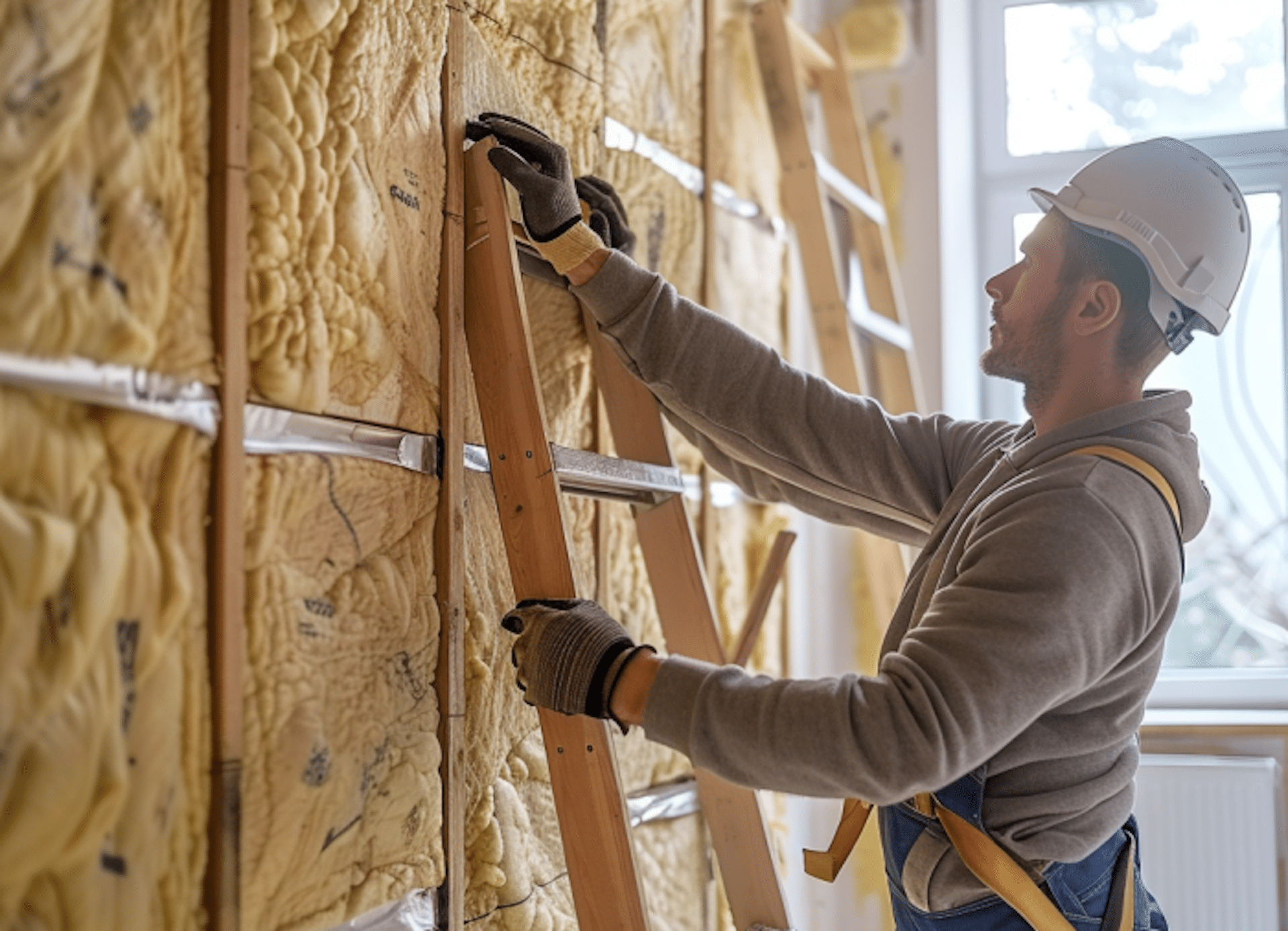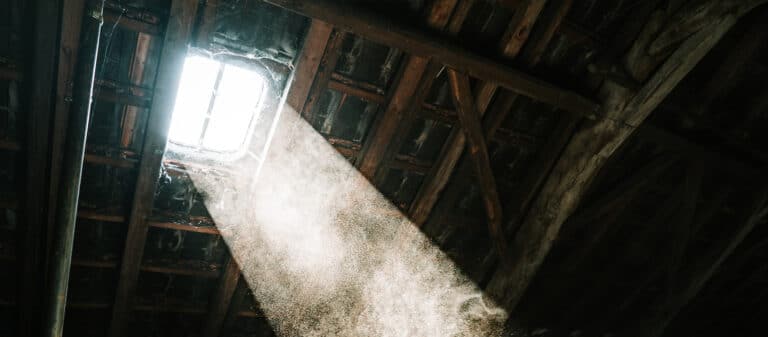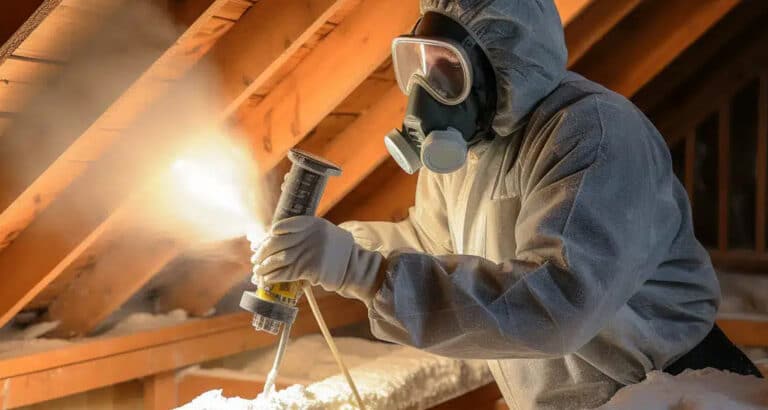As insulation ages, it can become subject to mold and pests and lose efficiency.
While most Northeastern Pennsylvania homeowners are more comfortable leaving their old insulation in place, it could lead to serious health issues over time.
So what’s the solution? Should you replace old insulation yourself? Add new insulation over the top? Or just leave it in place?
This guide will explain what to do with old insulation so homeowners in NEPA feel more confident heading into the cold or warm seasons.
If you are still determining how old your insulation is, it will be ideal to get it inspected by a professional insulation company.


How Long Does Insulation Last?
Insulation may last anywhere from 10-100 years, depending on the material, manufacturer, and installation process. Environmental factors, such as moisture and pests, may also impact the lifespan of your insulation. According to data from Angi, you can expect the following lifespans for these materials:| Insulation Material | Lifespan |
| Fiberglass | 80-100 years |
| Spray Foam | 80 years |
| Cellulose | 20-30 years |
Signs Your Insulation Needs Replacement
-
- Increased Energy Bills: A slow but steady uptick in energy usage, particularly during the winter, could be a sign your insulation is not working as properly.
- Uneven Temperature Distribution: Drafts or warm spots can indicate that your insulation is not keeping the air in or letting air seep through different pockets in your room.
- Visible Damage or Discoloration: Insulation that is sagging, discolored, or damp may be harboring mold, mildew, or pests, signaling the need for replacement.
- Worsening Allergies: If seasonal allergies are spiking this year, it could mean your insulation is not blocking out allergens like it once used to.
Options for Dealing with Old Insulation
If you find yourself dealing with old insulation, you’ll need to decide what option makes sense financially and regarding energy efficiency. There are generally three options to choose from:-
- Replace the Old Insulation: This is considered the most efficient option, as you will be able to select an insulating material that offers the highest thermal efficiency.
- Add New Insulation On Top: In some cases, if old insulation is not visibly water-damaged or moldy, you can add new insulation on top to improve performance. For example, spray foam can be used to reinforce fiberglass batts for higher efficiency.
- Leave the Old Insulation As-Is: This approach is not recommended as this will increase your energy bills and could possibly cause health problems.
Dangers of Leaving Old Insulation In Place:
For many homeowners, it might feel like any insulation is better than none, and if you aren’t replacing your old insulation with new insulation, this very well might be the case. However, old insulation that is damaged or moldy could pose several health risks, including respiratory issues, illness, and headaches. Consider that you are breathing in every bit of air that passes through damaged insulation. Likewise, depending on its material, old insulation could be liable to pests and even a fire hazard. For this reason, it’s always ideal to remove old insulation that is badly deteriorated. Vermiculite insulation should always be removed, as this material is considered highly toxic.Should You Remove Insulation Yourself?
Contacting a team of professionals with access to the right equipment and safety tools to remove old insulation is always advisable. Removing old insulation will expose you to harmful compounds that may come in contact with your skin or be inhaled if the proper safety precautions are not taken.
Safety Tips for Removing Insulation
If you decide to remove insulation yourself, follow these safety tips to minimize risks:- Wear Protective Gear: Always wear gloves, a dust mask, goggles, and protective clothing to prevent skin irritation, respiratory issues, and eye injuries.
- Work in Well-Ventilated Areas: Open windows and use fans to ensure adequate ventilation during insulation removal to minimize exposure to dust and airborne particles.
- Handle Materials Carefully: Avoid direct contact with insulation materials, especially if they contain hazardous substances such as asbestos or fiberglass. Use caution when handling and disposing of insulation to prevent contamination and exposure.
- Dispose of Waste Properly: Dispose of removed insulation materials according to local regulations and guidelines. If insulation contains hazardous materials, contact your local waste management authorities for proper disposal procedures.
Choosing the Right Insulation to Replace Old Insulation
Ideally, if you choose to replace old insulation with new insulation, you will need to consider the following factors:- R-Value: Select insulation with the appropriate R-value for your climate zone. Read here to learn how to select the proper insulation.
- Material: Choose insulation materials that are safe, non-toxic, and can be installed in an existing home easily, such as spray foam or blown-in insulation.
- Longevity and Durability: Look for insulation materials that are durable and long-lasting to minimize the need for frequent replacement and maintenance.
How Much Does It Cost to Replace Old Insulation in a Home?
The cost of replacing old insulation varies depending on factors such as the square footage of your home, the type of old insulation you’re dealing with, and labor costs. On average, homeowners can expect to spend between $1,500 and $10,000 for insulation replacement, including removing old insulation and installing new materials.How Often Should Insulation Be Inspected?
Insulation should be inspected every 15 years for signs of deterioration or water exposure. Even manufacturers of fiberglass batts that promise a lifespan of a century still recommend you inspect the batts every 15 years for proper precaution.Takeaways
Replacing old insulation is more than just lowering your energy bills. In many cases, old insulation can quickly grow toxic or dangerous if exposed to mold, mildew, or pests. Always team with a professional when removing old insulation and consult with companies in your area on the best material to replace your old insulation.










